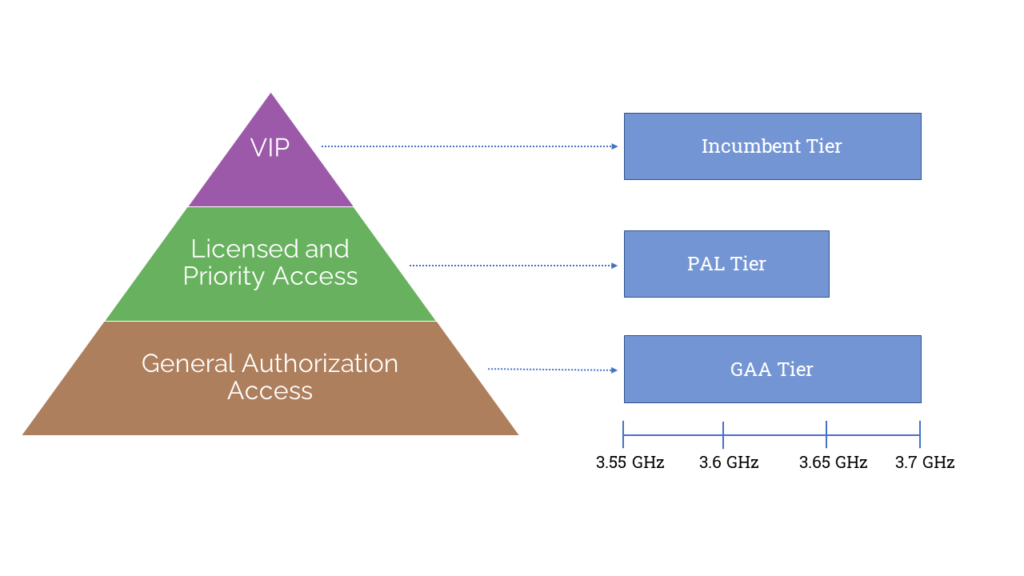What is CBRS?
Space
CBRS Overview
Space
In 2015, the FCC established a next-generation approach to use the 3.55 GHz to 3.7 GHz Band (now called CBRS – Citizens Broadband Radio Service), for general public and Federal use that was previously protected spectrum used by the US Navy and Department of Defense. The FCC implemented a Cloud based system, called the Spectrum Access System (SAS), to coordinate spectrum avoiding interference with CBRS networks operating next to or on top of each other.
What is also unique about the CBRS band is it will use LTE as its communication protocol for general public use. The 150MHz of the CBRS band is the combination of two LTE bands, the 42 (ranging from 3550 to 3660 MHz) and 43 (ranging from 3660 to 3700 MHz). The spectrum for Bands 42 and 43 is now part of CBRS, now called Band 48. LTE has some very significant advantages over other wireless protocols like Wi-Fi. We will review these advantages shortly.
As part of its approach, the FCC created a three-tiered access and authorization framework to accommodate shared Federal and public use of CBRS, see the figure below. This framework is important since part of CBRS is used by the US military. This framework ensures that the general public has access to this spectrum.

The CBRS usage framework has three tiers:
VIP Tier: This is the tier where the Incumbent usage is in place. The primary Incumbents include usage by the US Military (primarily the Navy) and Satellite Stations. This tier has priority access over the 150MHz (over the lower tiers), but it does not always use the entire band at every location. Most of the usage is near the coastlines and large military and government facilities.
PAL Tier: In this tier organizations can purchase a Priority Access License (PAL) from the FCC to cover a limited geographical area to use a 10MHz channel. The PAL is non-renewable and for 3 years only to encourage usage. The purpose of the PAL is to allow organizations to get a guaranteed slice of the CBRS spectrum. Only 70 MHz is allocated to the PAL users, the remaining 80 MHz is reserved for the GAA users.
GAA Tier: The General Authorized Access (GAA) is automatically allocated by the SAS within 100MHz of the entire CBRS band. The core idea is that GAA allocates automatically, to alleviate any interference with Incumbents or PAL users. GAA users use the available spectrum that is not occupied by the other tiers. GAA is available for usage by any company or organization that wants to roll out their own Private LTE network.
